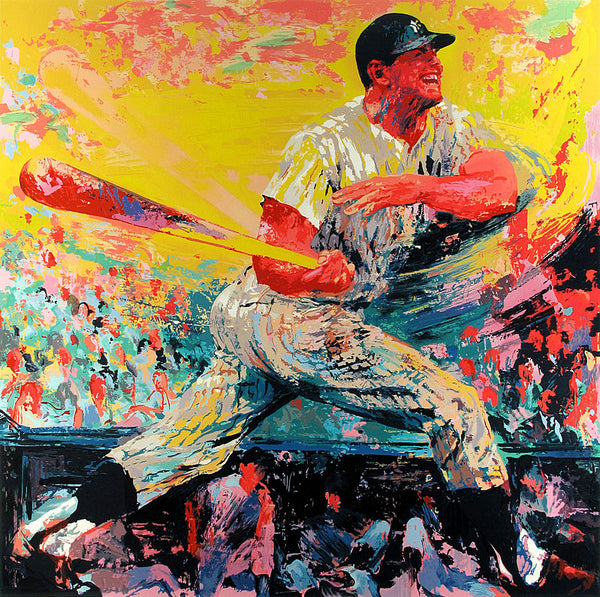Philip Guston was born June 27, 1913 in Montreal, Canada. Early in his childhood Guston's family moved to Los Angeles, California. When Guston was only 10 years he suffered a tragedy that would effect the rest of his life. Guston discovered his father's lifeless body after he had hung himself in their storage shed. This event extremely effected the young Guston and coincidentally soon after began to express himself through painting.
Guston began art instruction at the Los Angeles Manual Arts High School in 1927 when he was 14. In class Guston met lifelong friend and contemporary Jackson Pollock.
In school Guston's the majority of his paintings were figurative. In addition to his time spent in school Guston would draw people around his neighborhood and his mother. Guston was expelled from Manual Arts High School after writing an article for the school paper with friend Jackson Pollock that opposed the schools emphasis on sports over art.
He did not try to reenter the school and instead he went to Otis Art Institute in Los Angeles on a 1 year scholarship. Dissatisfied with his experience at in school Guston did not reapply after his 1 year scholarship had ended. He did not agree with the approach taken by his teachers in school and relied predominantly on teaching himself.
At the age of 18 Guston was asked to paint an indoor mural for the John Reed Club in Los Angeles. He accepted the challenge and painted a scene of the famous Scottsboro Boys civil rights case. The controversial mural was sadly destroyed by local police officers who objected. This incident would have a profound effect on Guston's social perception.
In 1934 Guston accompanied his friend Rueben Kadish to Mexico to paint an 1,000 square foot Mural on the wall of the former Palace of Emperor Maximilian in the capital of Morelia. They created a huge mural, The Struggle Against Terror, with an antifascist message. Their mural received great acclaim granted both artists significant recognition in the art world. While south of the border Guston made sure to spend time with fellow artists Frida Kahlo and Diego Rivera. In 1935 Guston moved to New York with many of his fellow artists and joined the WPA program painting murals for the government. While working for the WPA he married fellow WPA member Musa Mckim. They would collaborate many WPA murals together during their time with the organization.
Guston had his first solo exhibition in 1944. He began teaching at New York University and Pratt Institute. He also held graduate seminars at the Boston University. He was though of as a very inspirational instructor.
At the start of the 1950's Guston became less interested in representational work and more interested in the possibilities of abstract expressionism. He attained success during this period as a first-generation abstract expressionist painter. His new paintings consisted of large gesturally worked masses of color contrasting with apposing masses and brushwork within the picture. However, as he continued to delve deeper into abstraction he found it less and less fulfilling.
In the latter half of the 1960's Guston moved to Woodstock, New York and began to paint representational works once more. Thanks to his new outlook from his experiences as an abstract artist Guston did not return to direct representation. His figures now appeared cartoonish and otherworldly. An exhibit was held to show his new figuration paintings in 1970 at the Marlborough Gallery in New York and it was not received well. Guston received lots of negative criticism for his new approach and his contract with the Marlborough Gallery wasn't renewed. This drove him into a deep isolation in his home in Woodstock and he went for a period with no art dealer. He later joined the new David Mckee Gallery which he stayed with until his death. From his isolation Guston's work began to be more image based in relation to pop culture as well as social, racial, and political issues. Guston is best known for these paintings created towards the end of his career. He died June 7th, 1980 in his Woodstock home.
 If This Be Not I
If This Be Not I
I</span></div>





 Photos Thomas Green
Photos Thomas Green






 Photos Thomas Green
Photos Thomas Green




 Nude in Bath
Nude in Bath




 Being a second year Fine Arts Major at Cal State Long Beach Christian is always working on his craft. Photos Carson Hart
Being a second year Fine Arts Major at Cal State Long Beach Christian is always working on his craft. Photos Carson Hart
 Jacopo Carucci, more commonly known as Jacopo da Pontormo or just Pontormo, was born May 24th in the year 1494. He was born in the town of Pontorme, Italy. At a young age his parents died and he was shipped off to become an artist’s assistant. After arriving in Florence he assisted and stayed with Leonardo da Vinci, then later Mariotto Albertinelli, then Piero di Cosimo, and then staying with Andrea del Sarto.
Jacopo Carucci, more commonly known as Jacopo da Pontormo or just Pontormo, was born May 24th in the year 1494. He was born in the town of Pontorme, Italy. At a young age his parents died and he was shipped off to become an artist’s assistant. After arriving in Florence he assisted and stayed with Leonardo da Vinci, then later Mariotto Albertinelli, then Piero di Cosimo, and then staying with Andrea del Sarto.













